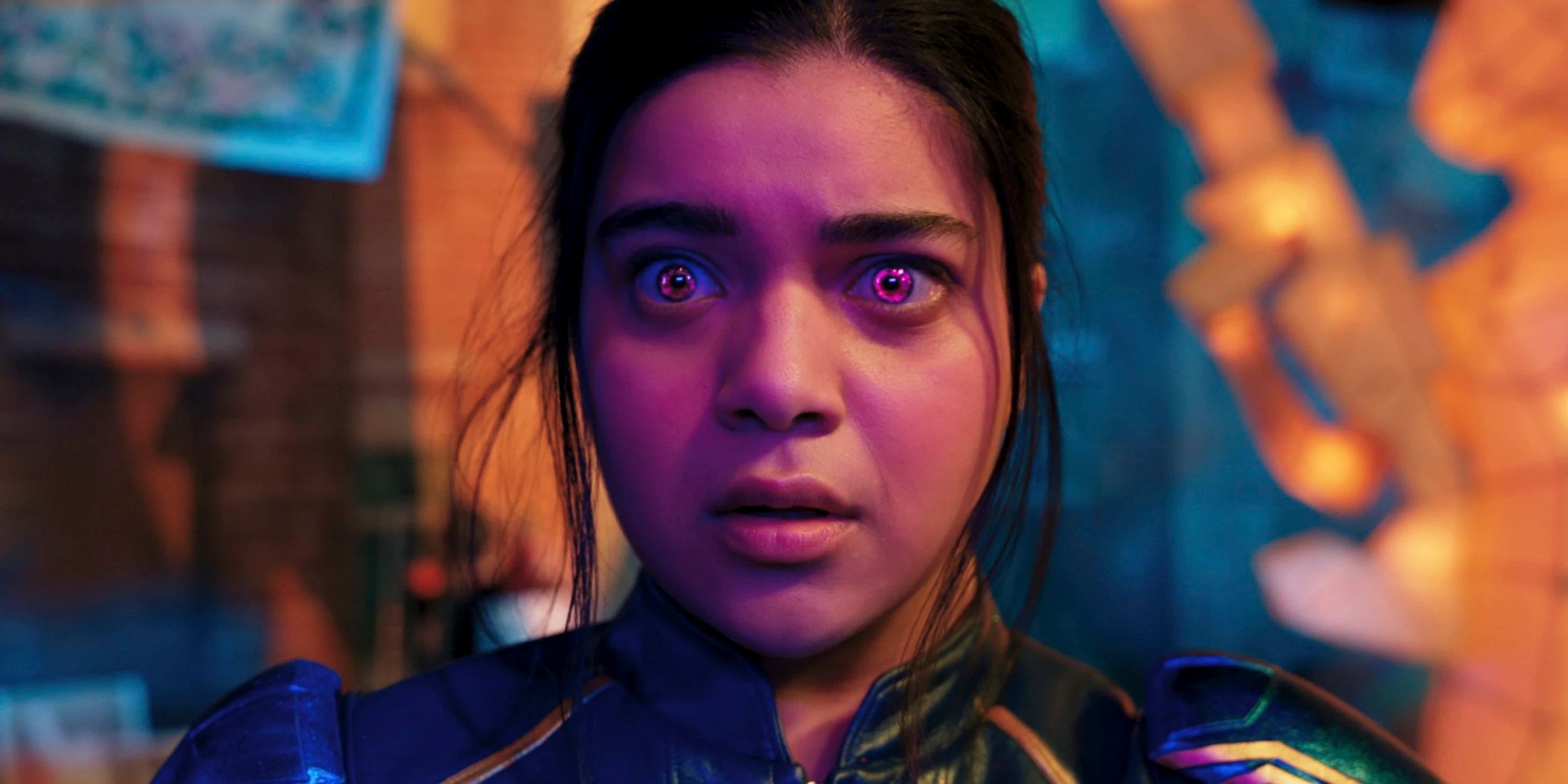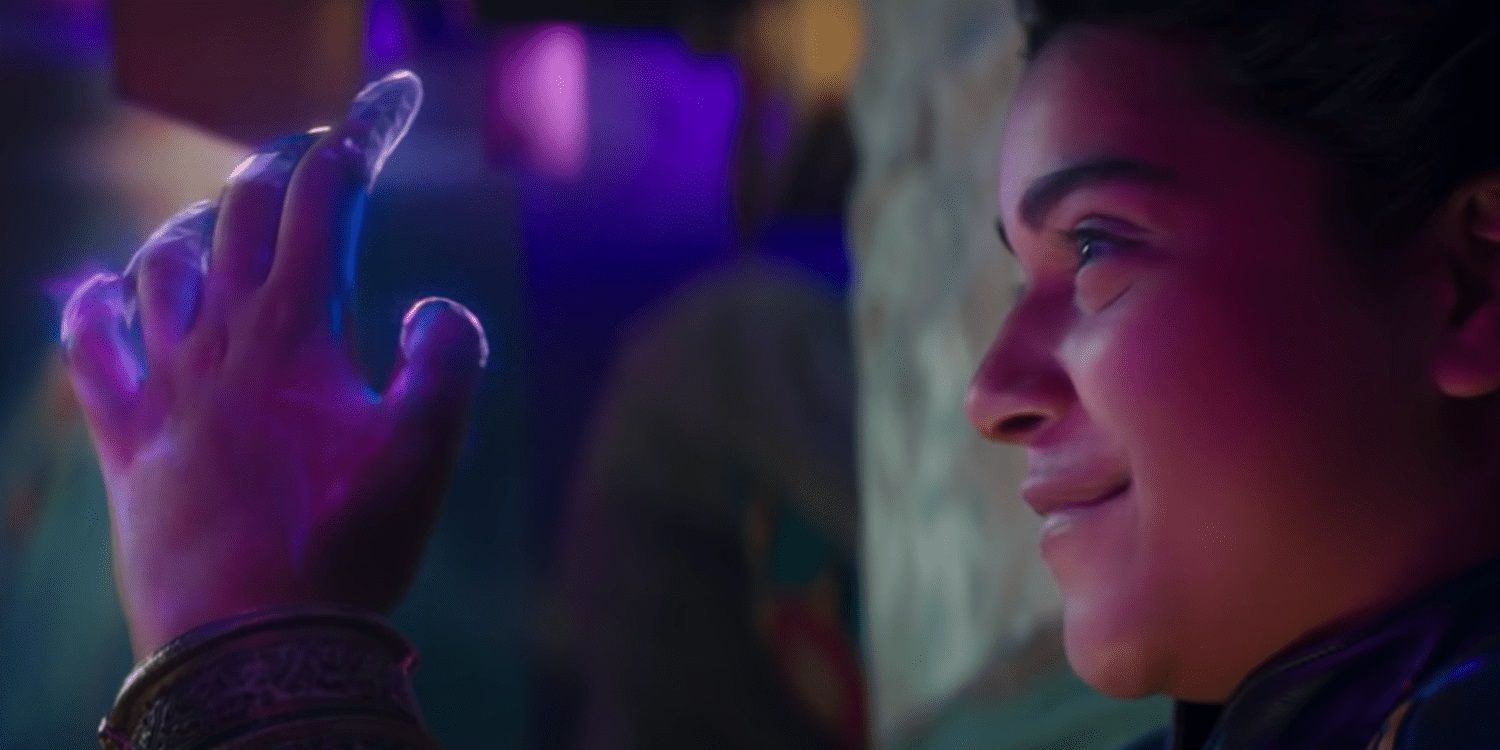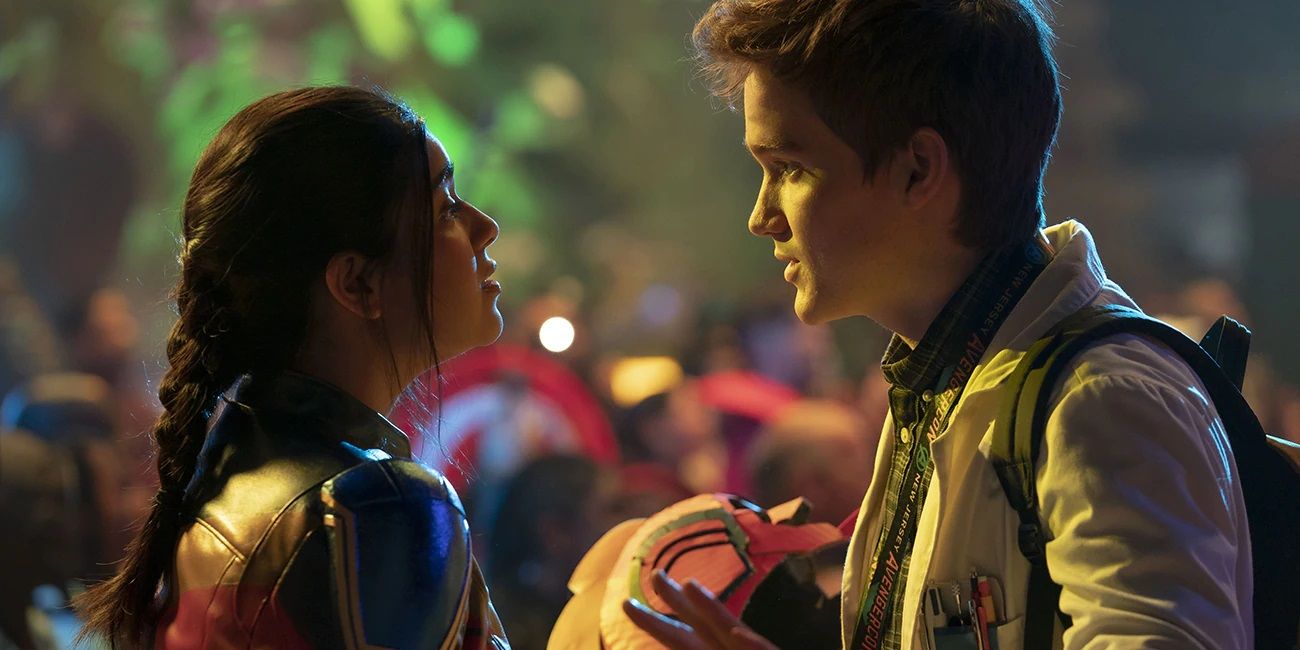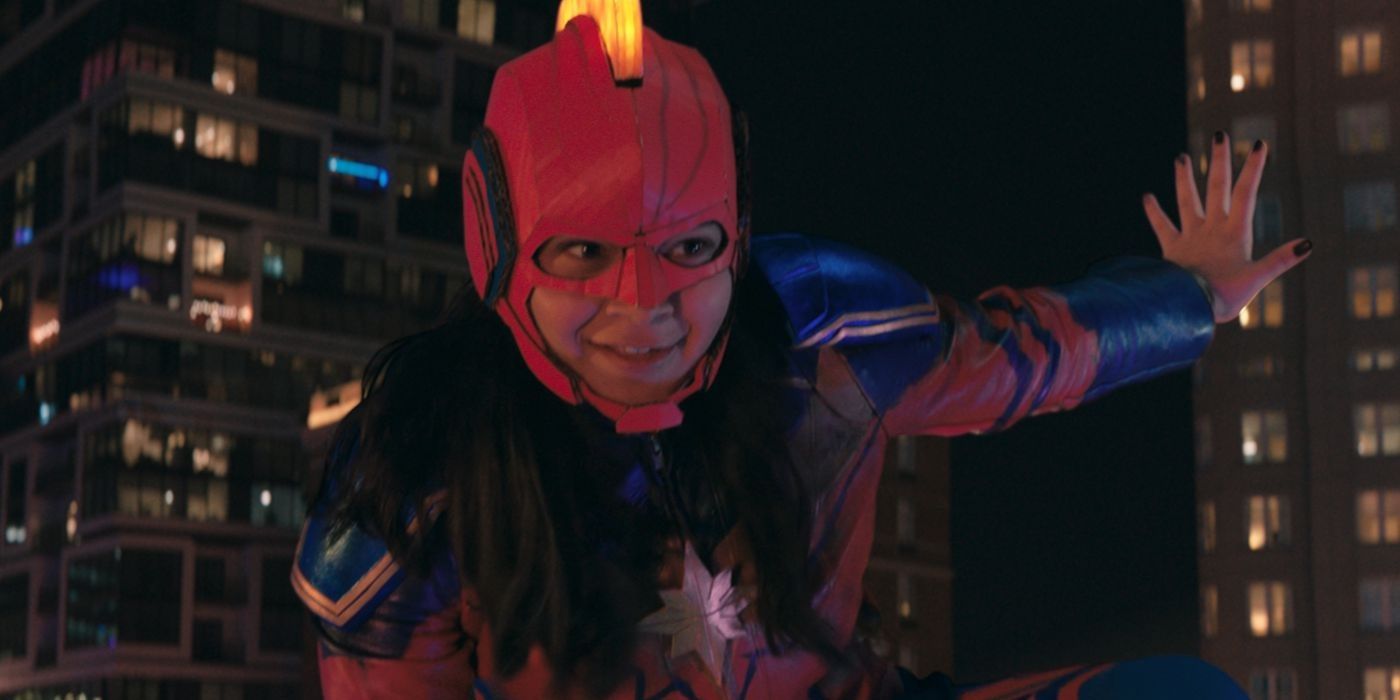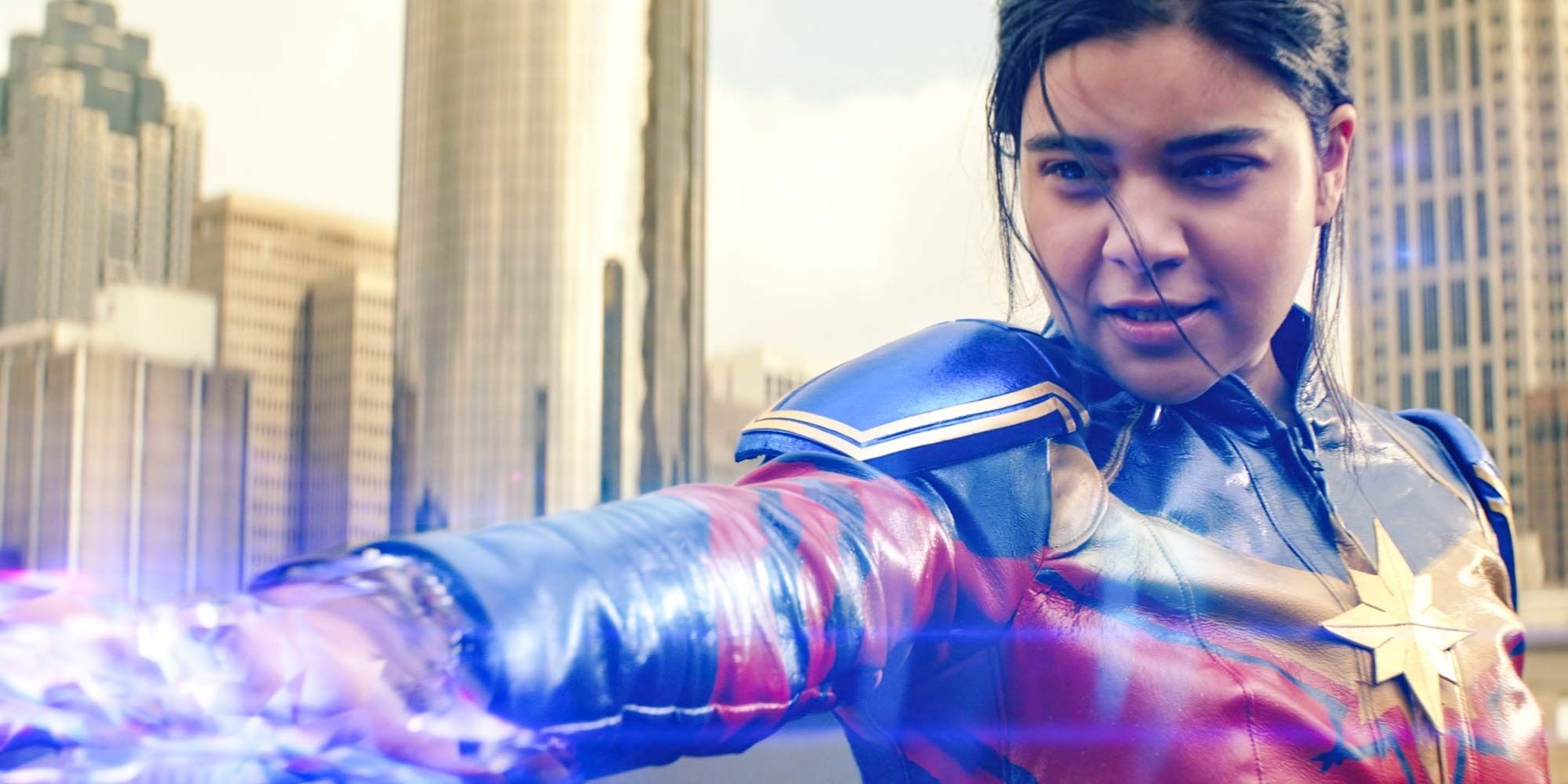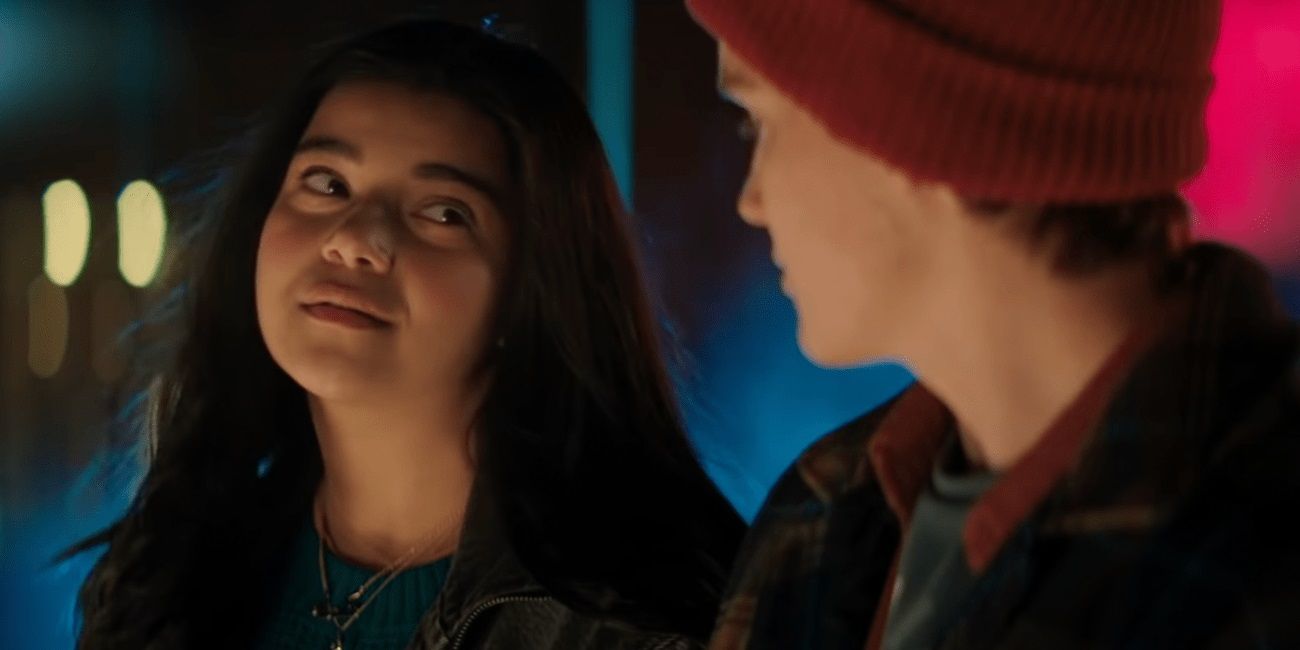Streaming data collector Samba TV recently announced that Ms. Marvel has received the lowest viewership of any MCU Disney+ series to date. According to their stats, in the first five days of its release, it was viewed by 775,000 households (which is apparently a small number in the TV viewership world). It’s a travesty that the show hasn’t caught on in the mainstream, because it’s easily the best MCU streaming show so far, and it’s not even close.
Above all, Ms. Marvel is the first MCU show that actually feels like a TV show and not a movie stretched out to a series. Its pilot episode is an actual pilot episode of a TV show, not the boring, uneventful opening scenes of a movie. It sets up characters that the audience can get invested in and storylines that will continue to grow and develop in the coming weeks. Shows like The Falcon and the Winter Soldier and Moon Knight have played like three-act movie storylines dragged out to four or five hours and chopped up into episodes. But Ms. Marvel already has a cast of characters that are richly drawn enough to last for seven or eight seasons.
In its premiere episode, Ms. Marvel is set up as a traditional high school show with a painfully relatable protagonist who’s easy to root for. Kamala Khan is awkward in social situations, her classmates keep her at arm’s length, and she’s unashamed of her geeky obsessions. This character happens to have superpowers, but she’s delightfully charming and more than watchable enough to carry her own show long before then.
In the title role, Iman Vellani exudes star power from the very first frame of the show. She delivers a quintessential Marvel hero turn with the perfect blend of heart, humor, and heroic spirit. Vellani gets every comedic delivery just right, like her understated “Heh!” after a hilariously anticlimactic rooftop fall, but she also brings out the depth and pathos in each dramatic scene. Her interactions with Zenobia Shroff as her mother Muneeba hark back to the authentic mother-daughter chemistry shared by Saoirse Ronan and Laurie Metcalf in Lady Bird. Vellani perfectly captures the giddy disbelief of a lifelong superhero fan gaining real-life superpowers by channeling her own excitement as a lifelong superhero fan playing an iconic character she’s adored for years in a cinematic universe she grew up watching.
Like every great TV pilot, the Ms. Marvel premiere sets up a few compelling character threads to keep viewers coming back each week. Kamala shares an adorable friendship with her brother but, across the generational gap, she struggles to connect to her strict, overbearing, yet ultimately loving parents. In true John Hughes fashion, Kamala’s best friend Bruno is clearly in love with her and she’s completely oblivious. For once, the interpersonal dynamics between the characters are more thrilling than the superhero action.
Not only is Ms. Marvel the MCU series that feels the most like a TV show; it’s also the one that feels the most like a movie, with more cinematic visuals and editing than the rest of Marvel’s Disney+ content. The show is full of stylistic flourishes like kinetic camera movements, sweeping scene transitions, and fast-paced Edgar Wright-style montages. Every frame is bursting with energy as the filmmakers blend animation into live-action.
Ms. Marvel’s camerawork is as frenzied and restless as Goodfellas. Seconds into a driving test, when Kamala crashes into the instructor’s car, the camera swoops from a wide shot to a close-up through Kamala’s window. When she lies down on the couch to watch TV, the camera does a full 180-degree flip to match her perspective. After Kamala meets a dreamy love interest, her feelings are visualized in a truly cinematic way: bathed in colorful, romantic lighting, she dances around the house and lip-syncs along to the Ronettes’ “Be My Baby.”
The first episode has an action-packed, semi-animated, ridiculously idealized montage of Kamala’s plan to sneak out to AvengerCon, which is then hilariously contrasted with the reality. She plans to swing off of a tree branch outside her bedroom window and do an elegant flip followed by a superhero landing. In reality, the branch snaps and she plummets to the ground. She plans to fly her bike, E.T.-style, off a bridge and onto the roof of a moving bus. In reality, she has to ditch her bike at the side of the road just to catch the bus.
Ms. Marvel could be accused of being overly stylized, but the style works spectacularly because the cinematography and editing serve the jokes in the comedic moments and serve the emotions in the dramatic moments. The filmmakers know when to hold back. Much like in Wright’s movies, Ms. Marvel only ever uses its unique visual style to spruce up the mundane. The substance that needs no sprucing is left alone. The more dramatic and character-driven a scene is, the less stylized the visuals are. In scenes like Kamala being confronted by her mother after sneaking back into the house or Nakia explaining her struggles with identity, there are no on-screen animations to distract the eye; just powerful, nuanced, deeply moving performances captured in shot-reverse shot.
Kamala is such an engaging lead, and her family and friends are already so interesting, that Ms. Marvel would work beautifully as a traditional teen dramedy if Kamala never acquired superpowers. But, of course, she does acquire superpowers, and the series is just as effective as a superhero story about a superhero fan becoming a superhero. Ms. Marvel nails every self-aware superhero moment – especially the training montage, which is perhaps the most fun (and certainly the least generic) training montage in an MCU project yet.
Kate Bishop had a great arc in Hawkeye as a budding young superhero who discovers the unglamorous toll of a superhero career. Ms. Marvel is following a similar arc, but it’s managing to pull it off more effectively without the mentorship of a traumatized veteran Avenger. Kamala is learning all the toughest lessons of superhero life for herself. Her first attempt to save a civilian in need is an emotional rollercoaster. In the climactic scene of the show’s second installment, a little boy falls off a balcony. Kamala uses her powers to catch him and instantly wins over an online fan base. But, right before she carries the boy to safety, she falters when she has an unexpected vision and very nearly allows the boy to fall to his death. After a lifetime of hero worship, Kamala learns the harsh reality of heroism within moments of trying to become a hero in her own right.
Every Marvel fan can see themselves in Kamala because she’s an in-universe Marvel fan. She dreams of having superpowers, but doesn’t think it’ll ever happen to her – and then it does. It’s heartening to know that, even if Ms. Marvel isn’t capturing a huge audience, the audience it is speaking to is young people. According to Samba’s tweet, viewers between the ages of 20 and 24 are watching Ms. Marvel faster than they consumed any previous MCU series.
The show might not have as wide an audience as it deserves, but at least it’s reaching its target demographic. This is a show that tells audiences to believe in themselves, and that they can be anything they want to be, which is a message that young people sorely need to hear in an increasingly worrying and uncertain modern world. Ms. Marvel’s message is beautifully encapsulated in Bruno’s reassuring words to Kamala: “You’re Kamala Khan. If you wanna save the world, then you’re gonna save the world.”

